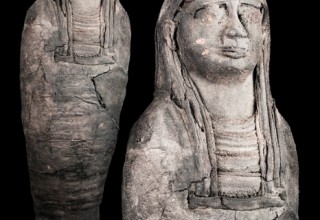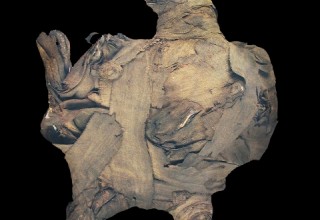Sadigh Gallery Presents Ancient Egyptian Mummified Birds from the 18th Dynasty and the Ptolemaic Period
This exhibit provides excellent examples of animal mummification, and also highlights some of the cultural significance that various species of Birds (Falcons, Ibises, Vultures and Geese) had on ancient Egyptian society.

New York, NY, December 12, 2014 (Newswire.com) - Four Mummified birds, currently on display at Sadigh Gallery, sheds some light on the roles that birds played in ancient Egyptian art, culture and mythology. This educational exhibit, which features two mummified falcons, a vulture and an ibis, explores the complex relationship between birds and the ancient Egyptians, and how they helped understand the world around them.
Cats are often described as the most revered animals in ancient Egypt, but one must not overlook the significance of birds too. Birds provided a variety of functions. They were hunted, raised and tamed, more importantly; they were sacrificed and venerated as an object of worship. The human-headed bird, Ba, plays a symbolically important role in Egyptian art and religion. Ancient Egyptians believed the human soul was comprised of five parts: Ren, which represented the name of the individual; Sheut, which represented the shadow or silhouette of the individual; Ib, which represented the heart; Ka, which represented the spirit; and Ba, which represented everything else that made the individual unique. The Ba bird is an aspect of the individual that the Egyptians believed would live after the body died, the part that will fly away to rejoin the spirit, Ka, for continued existence in the afterlife.
Many Egyptian Gods were represented as birds. The Falcon is the sacred animal of Horus, the guardian deity of the ruler and the God of the sky. Thoth, the God of wisdom and writing, is usually represented as an Ibis. Wherever Thoth was honored, ibises were mummified and placed in tombs. In Sakkara, thousands of such mummies were found. Montu and Sokar, the Gods of war and craftsmen, were usually represented in the form of a crowned mummified falcon or hawk.
Birds were associated with protection and kingship. Vultures were depicted on the ceilings of temples as a symbol of protection, or sitting on the ground as a symbol associated with kingship. They appeared alongside the Ureaus, a stylized form of an Egyptian cobra used as a symbol of sovereignty, on the headdresses with which kings were buried. The vulture was the manifestation of Nekhbet and Mut, both important Goddesses in Upper and Lower Egypt.
Aside from the symbolic significance of birds, they also helped ancient Egyptians predict everyday things, such as the weather. For instance, Ibises were believed to have had secret knowledge because they showed up shortly before the annual floods. Ibises were so venerated that anyone, who killed one, accidentally or not, was put to death. Birds also played an important role in the creation myth. The Geese were believed to have laid the Cosmic Egg from which the Sun God Ra hatched.
All in all, birds and bird iconographies were a major part of ancient Egyptian art and religion. They were associated with protection, motherhood and more importantly, death and the afterlife. This exhibit, which is open to the public, provides detailed write-ups on each individual piece on display. This includes a brief history of the time period in which these bird mummies were found, along with an in depth analysis of various mythologies and stories concerning birds in ancient Egypt. X-Ray samples for each of the mummies are also available.




